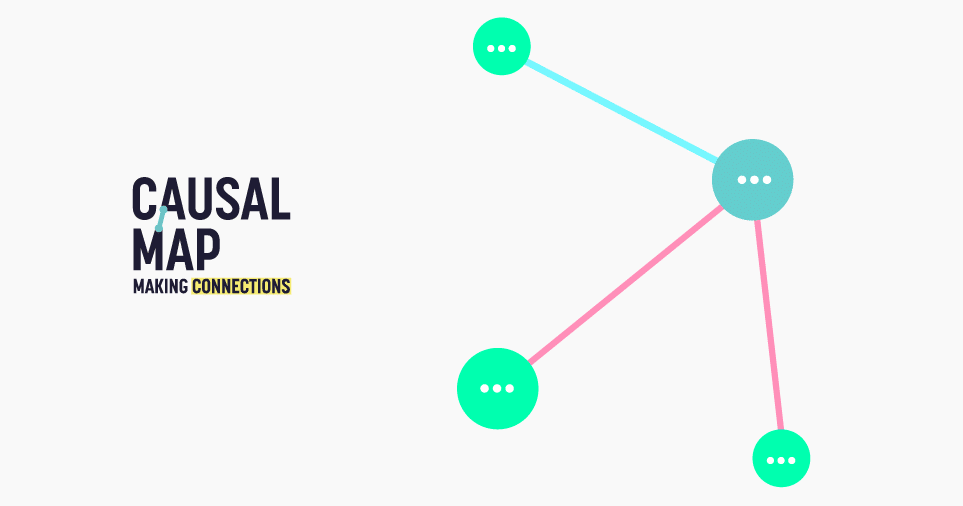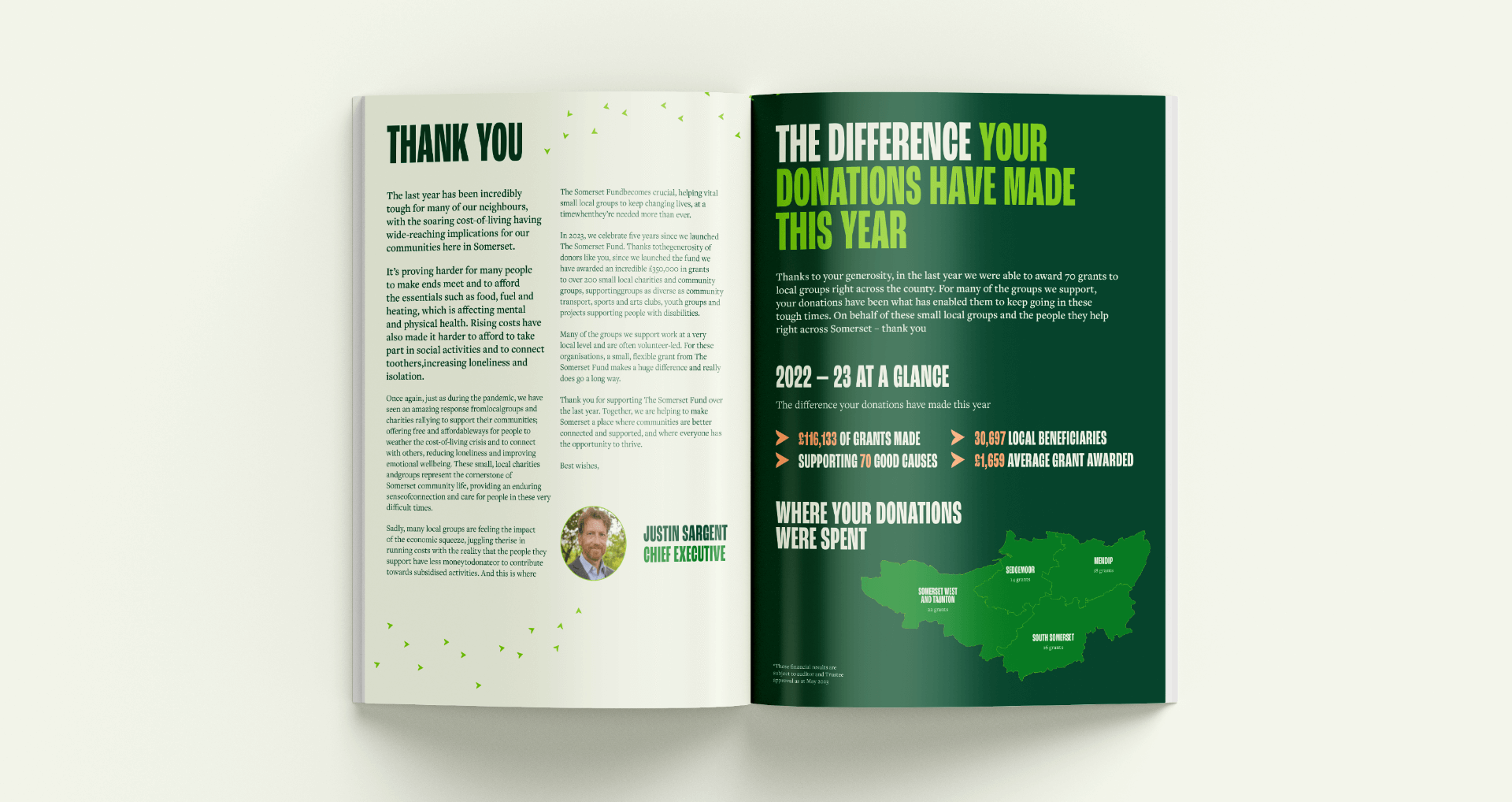Opening the doors to change
How getting personal helps us create something better

Life is a series of seasons and stages, a journey of and through change. How we respond to the changes that come our way determines our future. Even though we may sometimes get stuck, human instinct programmes us to problem-solve, let the light in and find ways to improve things.
When we’re working with clients, the blockages we come up against might be organisational, professional or personal. Frequently, particularly with purpose- or founder-led companies, it’s a mixture of all three, in varying degrees. We help our clients overcome these blockages and move on by, firstly and most importantly, discovering what has caused them to get stuck and from that, understanding what’s motivating them towards wanting to make a change.
Understanding the motivation behind change
Of course, as a brand consultant, my focus is very much on helping bring about the transformation that will make all the difference. Having the right strategy, great design or spot-on copywriting are just some of the ways that brands can arrive at a place of clarity where they really resonate with their target audience. But what I find equally fascinating is doubling down on discovering what is driving that need for change in the first place:
So, what is it that motivates people to always be looking for improvements in themselves and their teams, all the better to serve the people they have an impact on? I wanted to take a closer look at this area and set myself the task of gathering and analysing the answers to one question that I recently asked my clients and collaborators:
In the last year, what change, either intentional or one that you couldn’t avoid, has changed your life for the better, and why?
I chose to ask this now because just over a year ago, I underwent my own transformational rebrand (I wrote about it here) and became The Co-Foundry. The last year seemed like a good time frame to give people, particularly as it coincided with the UK reopening its economy after the pandemic lockdowns.
The question was deliberately left open, allowing respondents to reply without being led and discouraging closed one-word answers. As our client Fiona Remnant from Causal Map says, “a good open question elicits a story of change”. In fact, when Fiona saw the question come into her inbox she immediately replied with an offer to use their Causal Map app to analyse the survey results. The results you get from Causal Map are so much better than any word cloud visual because the app is able to highlight cause and effect in the answers.
The Causal Map app
Initially developed by a team from the University of Bath to help charities evaluate the impact of social change initiatives, Causal Map is a new online research tool – a way to aggregate, analyse, code and visually present information, making sense of what interviewees are telling you and finding links between causal factors – uncovering what causes what.

The answers, quite naturally, were varied but definite themes emerged. It was pleasing to see a thread appear in which several respondents cited The Co-Foundry as contributing to their business growth through the repositioning work we’d done with them.
But the intention behind the question had always been about so much more and by far the strongest causal theme in the responses given was a desire to get out into nature more regularly with the resulting effects that would have on improving family dynamics and work focus. As one respondent put it:
So mostly simple, intentional things … I need to do to maintain some level of basic fitness and wellbeing and to get it done and out of the way before I set off for a day planted in front of a computer screen with seemingly little or no ability to prise myself away once begun. The main idea with this is to get some early morning daylight whilst physically outside and not wearing sunglasses.
And another…
The pandemic brought about remote working, and this made it harder to switch off and maintain a healthy work / life balance. What works for me is to do something drastically different to flip me out of work mode. This could be getting out in the open air with my kids, playing football, goofing around with them, taking the dogs for a walk, or going to the gym.
Towards greater openness
What really struck me though was not so much what people said, but how personally they chose to respond – the openness and intimacy of their answers. I do believe that despite all the terrible effects of the pandemic, this ease with being far more open reflects something positive that has come out of that time. The past couple of years have undoubtedly changed how we interact, particularly at work. Whether it’s between clients or among colleagues, it seems like that professional guard has been dropped in favour of something altogether more human. Although the spark may have been the collective shock of the events and repercussions of the pandemic as it unfolded, this increased openness was also down to being ‘invited’ into people’s hastily assembled home workspaces and seeing them in less traditional working environments, amid their everyday domestic lives.
How the personal speaks to the universal
When we work on rebranding projects, it’s that opening up, where people feel able to talk and share freely, that yields the most valuable material; when personal stories and experiences start filtering through during our collaborative discovery process. After all, as marketing strategy consultant, educator and author, Mark Schaefer said in his 2019 book, Marketing Rebellion, “the most human brand wins”.
As human beings, we engage best when we have a clear and concrete sense of detail. Personal responses and lived experiences offer that specificity which leads to connection because they open the door on the universal truths we all share and can identify with.
And of course, rebranding itself, particularly for The Co-Foundry’s client base of founders and creatives, and purpose-driven charities, is invariably a highly personal thing, which is why we always look to bring the teams of the companies we work with on the brand transformation journey.
The Great Re-evaluation
When you’re in the research phase, asking open questions and gathering ideas, there’s always a temptation to keep going. It would have been interesting to have gone back further to uncover the underlying causes motivating my clients and collaborators to seek change. Was it burnout arising from that first pandemic year of lockdowns or was it a deeper-seated shift in values that the pandemic brought to the fore?
I definitely got the sense that the answers I received from the relatively small sample of people I asked my question to are reflective of the Great Re-evaluation we’re hearing so much about, “It isn’t so much that people have less ambition, but that their ambition is changing – from being about career success first, to work-life balance,” (Julia Hobsbawm OBE, entrepreneur, consultant and author of The Nowhere Office).
The upheaval prompted by the pandemic revealed how precarious the world, as we thought we knew it, was. The realisation that ‘all bets were off’ forced us to change our priorities and be more vocal about what was really important – relationships, family, health, hobbies and our communities. For many, work and ways of working revealed themselves to be far more flexible than we could have ever envisaged, pre-pandemic. One of the answers I received certainly backed up this up, “I definitely used to think every element of my life had to be calculated and I always had to know what my next move was going to be – but since letting go of that and being brave enough to live in the moment, I’m a lot happier!”
And it’s this sort of spirit that will undoubtedly find its way into how brands reposition and reimagine themselves in the future – letting more of their ‘human’ element in – all the better to appeal to the people who matter most to them.
Many thanks to Causal Map for their help in putting together this blog post and my research findings: Whether you’re working on strategy, researching a project, wanting to evaluate an initiative or visualise stakeholders’ experiences, Causal Map has the power to not only help you gain a deeper understanding of what’s going on behind the scenes, but also to be able to present those findings in a visual and compelling way.




